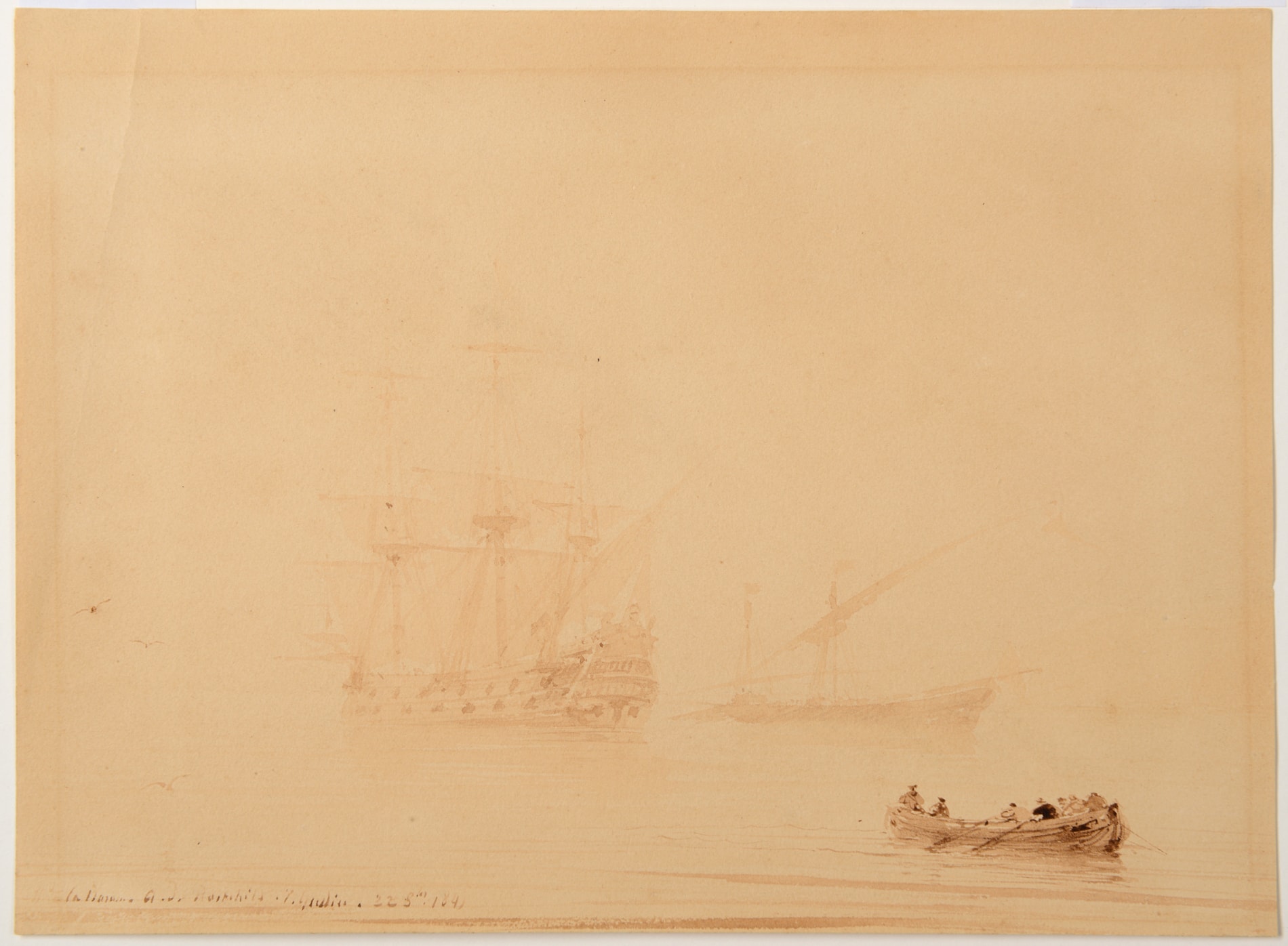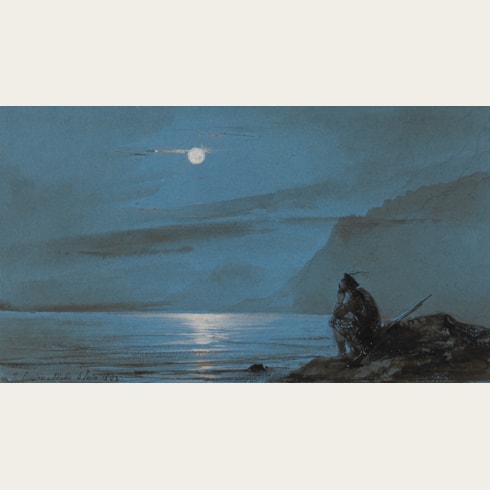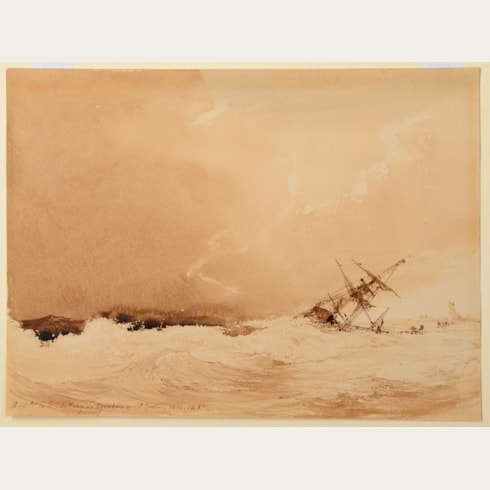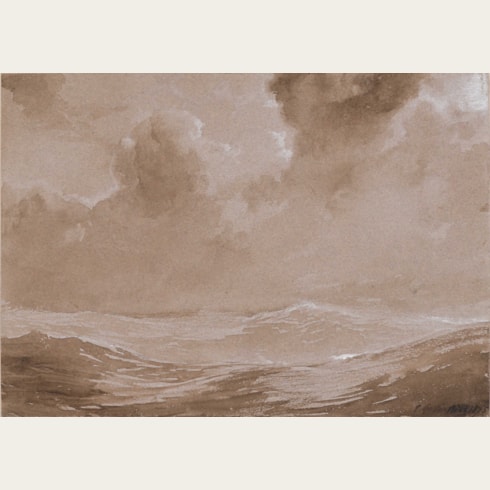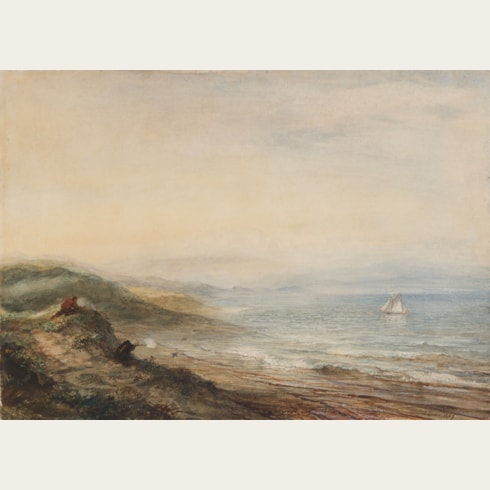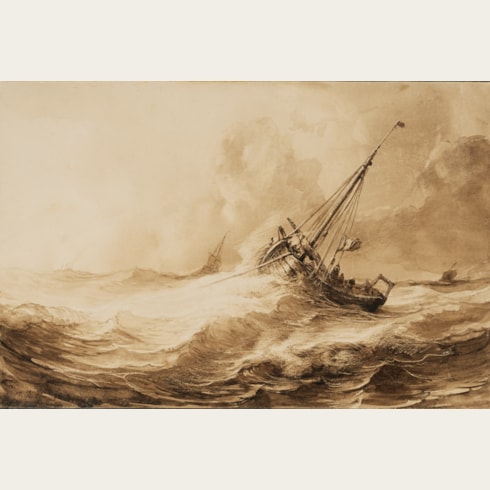Théodore GUDIN
(Paris 1802 - Boulogne-Billancourt 1880 )
A Party Rowing Ashore from a Warship on a Misty Morning
Signed, dated and inscribed la Baronne A. de Rothschild T. Gudin. 22 8bre 1841 at the lower left.
177 x 251 mm. (7 x 9 7/8 in.) [image]
194 x 270 mm. (7 5/8 x 10 5/8 in.) [sheet]
Gudin achieved his first successes as a painter of seascapes and naval subjects, and his painting of The Fire on the Indiaman ‘Kent’ received much praise at the Salon of 1827 and earned the artist the Legion of Honour from King Charles X. He observed part of the French military campaign in Algeria, and in 1830 was one of the first two artists named to the post of official peintre de la Marine at the court of King Louis-Philippe, along with the artist Louis-Philippe Crépin. Among Gudin’s significant commissions was a series of paintings of views of French ports for the Palace of Versailles, a project first begun by Claude-Joseph Vernet, as well as a series of nearly one hundred large paintings depicting victories of the French Navy, also for Versailles, several of which were exhibited at the Paris Salon between 1839 and 1848. He also produced a number of etchings and lithographs, and contributed illustrations for such books as Eugène Sue’s Histoire de la marine française, published in 1835. Famous throughout Europe as a marine painter, Gudin was ennobled as a Baron by Louis-Philippe, and in 1844 married the King’s goddaughter Margaret Hay, daughter of General Sir James Hay and granddaughter of the 7th Marquess of Tweedale.
Gudin painted numerous views of the Channel coast and the Mediterranean, and also travelled to Italy, Holland, Poland, Russia and Turkey. He spent much time in Scotland, where his wife’s family was from, and was often a guest of his father-in-law at his home of Seaton House in Aberdeenshire. From there he would send paintings to be exhibited at the Royal Academy and the British Institution in London, while others were shown in Paris, including such genre paintings as A Scottish Hunting Party, exhibited at the Salon of 1849. Apart from Charles X and Louis-Philippe, among his other patrons were the Duc d’Orléans, Czar Nicholas I (who invited the artist to St. Petersburg in 1841) and the Emperor Napoleon III, whom he accompanied as painter on an official visit to Algeria in 1865. Gudin retired to Scotland after the Franco-Prussian war of 1870-1871, apparently adopting the surname ‘Gordon’, although he continued to send paintings to the Paris Salons until his death.
Théodore Gudin’s drawings in sepia wash or watercolour were much admired for their atmospheric depictions of stormy seas, placid waters, sunsets and harbour scenes by moonlight, and were avidly acquired by collectors and connoisseurs throughout Europe. Drawings and finished watercolours by Gudin are today in the collections of the Louvre, the British Museum, the Rijksmuseum in Amsterdam, and elsewhere.
Provenance

